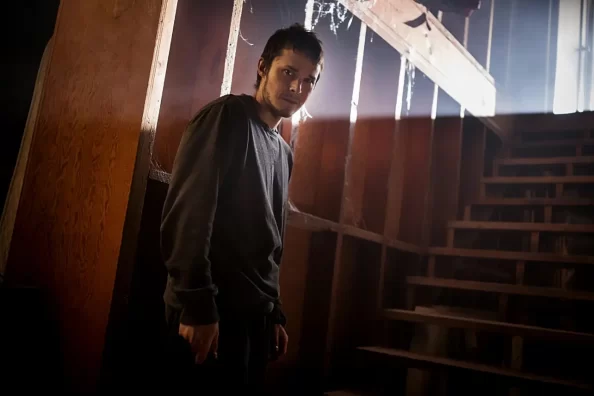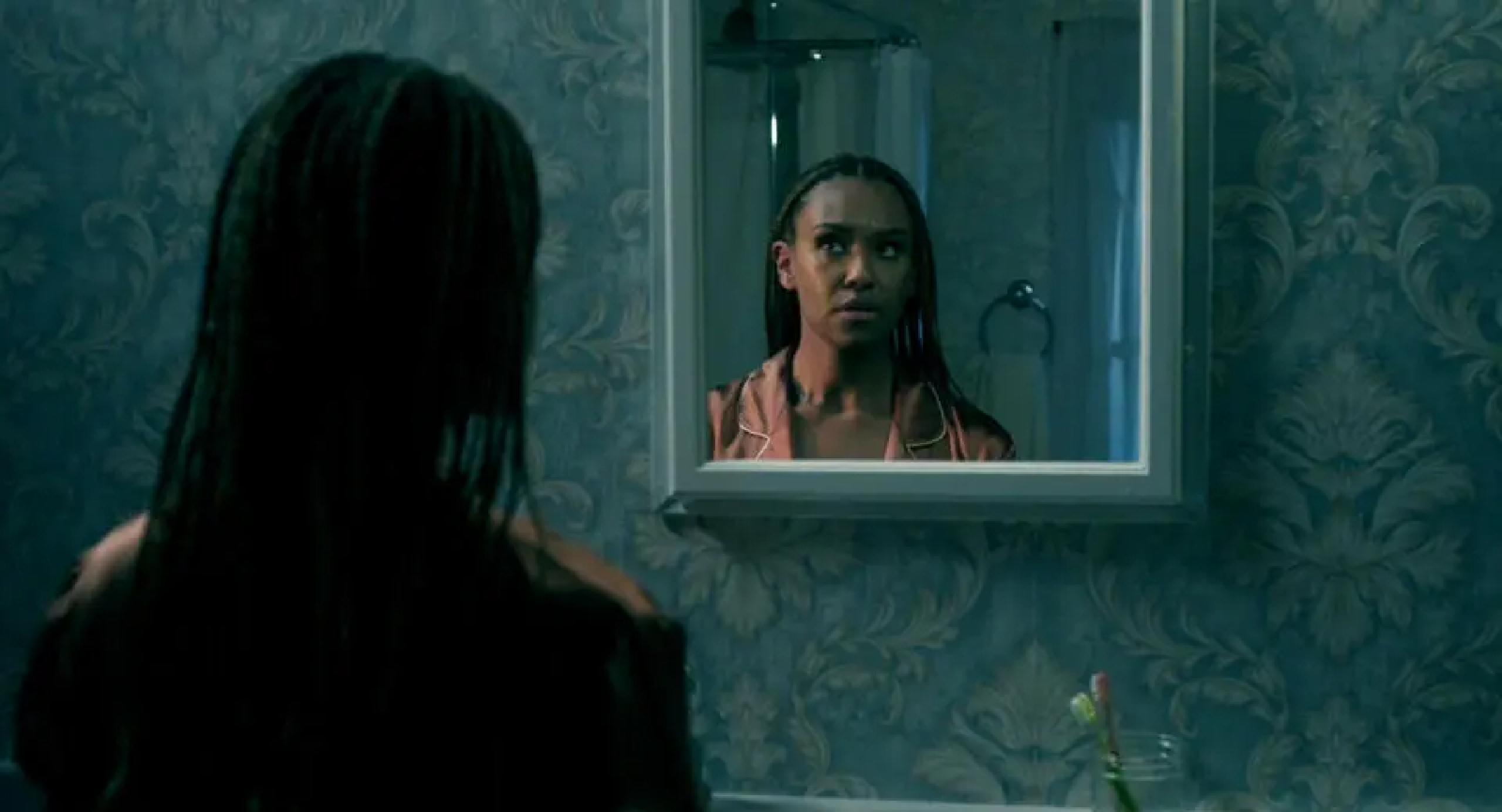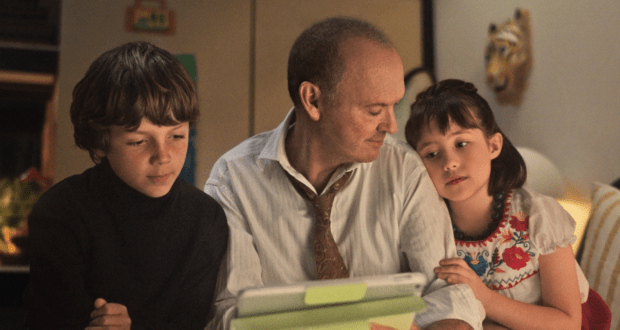Director Constance Zimmer’s Boy in the Walls attempts to blend psychological horror with domestic drama, presenting a story that promises chills and tension. The film revolves around Alisa Jensen, portrayed by Ryan Michelle Bathe, a newlywed who trades the hustle and bustle of Manhattan for the tranquility of rural Connecticut. However, what initially appears to be a fresh start gradually evolves into a nerve-wracking ordeal as Alisa becomes convinced that she is not alone in her new home. While the film’s premise holds potential, its execution leaves much to be desired, resulting in a production that struggles to effectively captivate and terrify its audience.
The movie begins with Alisa and her husband, portrayed by Jonathan Whitesell, embarking on their new life together in a picturesque countryside home. The scenic backdrop sets the stage for a contrasting sense of isolation that Alisa starts experiencing. The initial establishment of the ‘atmosphere’ is one of the film’s strong points, as the serene landscapes are effectively juxtaposed with Alisa’s growing unease.
The Good:

Ryan Michelle Bathe delivers a commendable performance as Alisa, portraying the character’s emotional turmoil with sincerity. Bathe’s portrayal lends authenticity to Alisa’s mounting anxiety, successfully making the audience empathize with her increasingly precarious situation. The chemistry between Bathe and Whitesell is palpable, effectively conveying the couple’s genuine affection for each other, which in turn amplifies the stakes as Alisa’s mental state deteriorates.
As Alisa’s apprehension intensifies, she begins hearing strange noises emanating from within the walls of her new home. Here, the film struggles to strike a balance between suggestive subtlety and overt horror. Instead of allowing the tension to build organically, the auditory cues are often jarring and exaggerated, detracting from the overall sense of suspense. The film’s score, while initially promising, often overcompensates, manipulating the viewer’s emotions rather than letting the unease develop naturally.
April Telek‘s portrayal of Chief Watkins, a local law enforcement officer, adds depth to the narrative as she tries to assist Alisa in uncovering the truth behind her distress. Telek’s performance injects a dose of realism into the otherwise surreal scenario, grounding the film in the realm of plausibility. However, the script occasionally falters in providing Chief Watkins with meaningful dialogue and substantial interactions, leaving her potential underexplored.
The Bad:

The film’s pivotal themes center around isolation, mental instability, and the harrowing idea of being constantly surveilled. These elements hold promise in terms of delving into Alisa’s psyche and creating a truly immersive psychological horror experience. Regrettably, the screenplay often opts for surface-level exploration, neglecting the opportunity to delve deeper into Alisa’s unraveling mental state. The themes feel underdeveloped, causing the potential impact to be lost amidst a sea of missed opportunities.
Boy in the Walls introduces several supporting characters, including Luke Camilleri‘s Chris and Cassandra Sawtell‘s Maya. However, their roles remain largely peripheral, failing to contribute substantially to the narrative progression or Alisa’s character development. While their inclusion attempts to provide a well-rounded ensemble, the lack of meaningful interactions diminishes their overall significance, leaving the audience wanting for more connection and relevance.
Jonathan Whitesell’s portrayal of Joe, Alisa’s husband, is characterized by genuine concern and frustration as he grapples with Alisa’s deteriorating mental state. However, the character’s depth is compromised by sporadic character development and an underexplored backstory. This lack of substantial background information inhibits the audience’s ability to fully invest in Joe’s perspective, reducing the emotional impact of his plight.
In terms of directorial choices, Constance Zimmer succeeds in creating a visually striking experience, particularly in capturing the contrast between Alisa’s internal turmoil and the idyllic surroundings. However, the film’s pacing often falters, with scenes feeling either rushed or excessively prolonged. This inconsistency impedes the narrative’s flow, preventing the film from fully engaging its audience.
Overall:
Boy in the Walls presents an intriguing premise that, unfortunately, fails to translate into a gripping and haunting cinematic experience. While the performances, particularly Ryan Michelle Bathe’s portrayal of Alisa, exhibit genuine commitment, the film’s execution falls short in terms of maintaining tension, exploring its themes, and developing secondary characters. Director Constance Zimmer’s efforts to fuse psychological horror with domestic drama yield mixed results, leaving audiences with a sense of unfulfilled potential. Despite the commendable attempts at atmosphere and character empathy, Boy in the Walls ultimately struggles to rise above its flaws, resulting in a movie that falls squarely in the middle of the spectrum.
-
Acting - 7/10
7/10
-
Cinematography/Visual Effects - 4/10
4/10
-
Plot/Screenplay - 4/10
4/10
-
Setting/Theme - 5/10
5/10
-
Watchability - 5/10
5/10
-
Rewatchability - 3/10
3/10

















